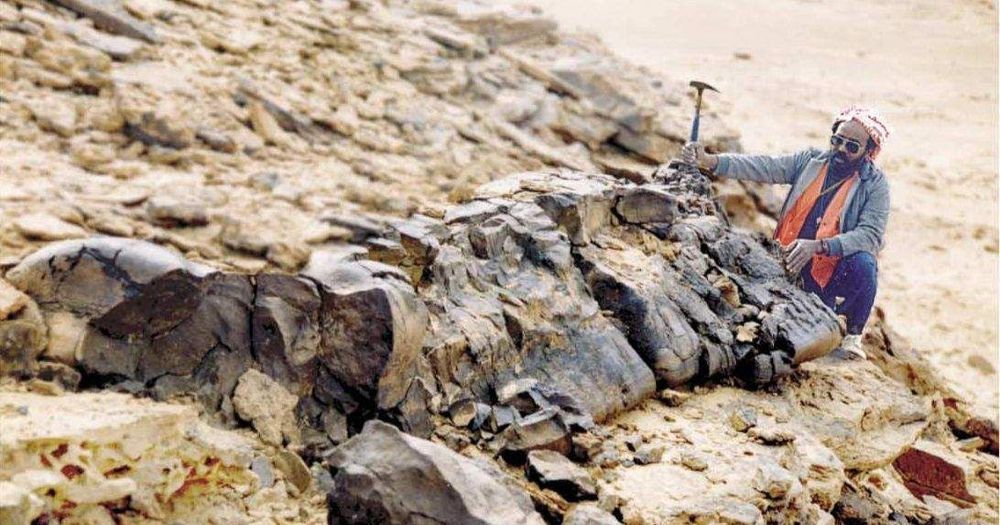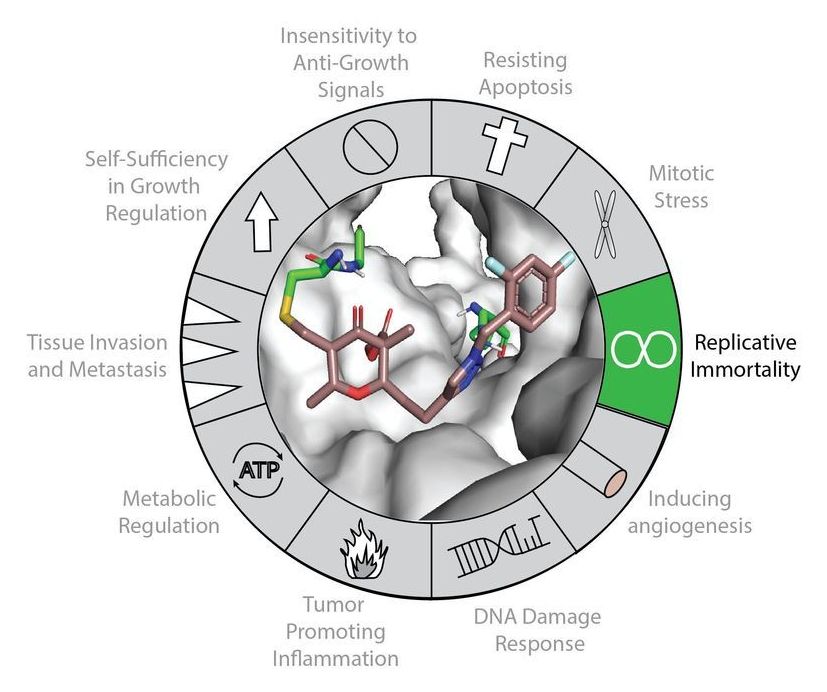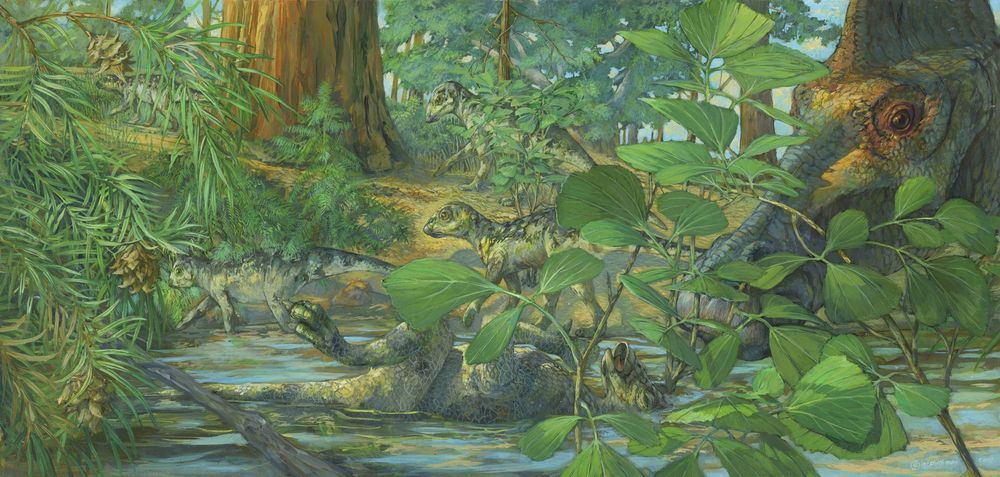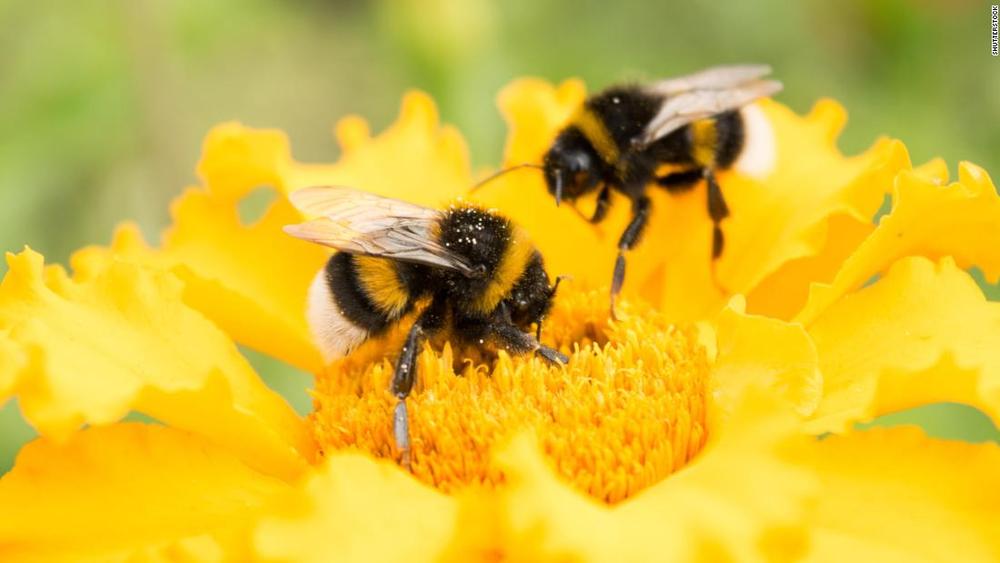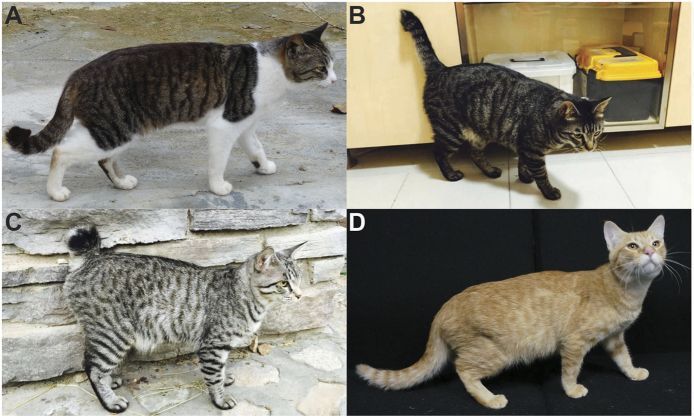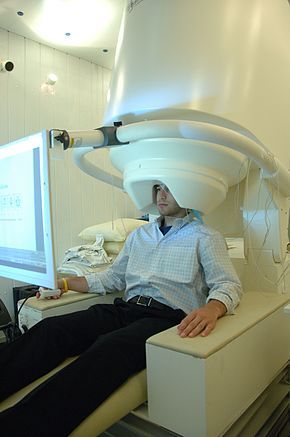Domestic cats exhibit abundant variations in tail morphology and serve as an excellent model to study the development and evolution of vertebrate tails. Cats with shortened and kinked tails were first recorded in the Malayan archipelago by Charles Darwin in 1868 and remain quite common today in Southeast and East Asia. To elucidate the genetic basis of short tails in Asian cats, we built a pedigree of 13 cats segregating at the trait with a founder from southern China and performed linkage mapping based on whole genome sequencing data from the pedigree. The short-tailed trait was mapped to a 5.6 Mb region of Chr E1, within which the substitution c. 5T C in the somite segmentation-related gene HES7 was identified as the causal mutation resulting in a missense change (p. V2A). Validation in 245 unrelated cats confirmed the correlation between HES7-c. 5T C and Chinese short-tailed feral cats as well as the Japanese Bobtail breed, indicating a common genetic basis of the two. In addition, some of our sampled kinked-tailed cats could not be explained by either HES7 or the Manx-related T-box, suggesting at least three independent events in the evolution of domestic cats giving rise to short-tailed traits.
The majority of vertebrate species, with the remarkable exceptions of humans and apes, possess a visible tail throughout their lifespans. The animal tail is an important appendage to the torso and plays adaptive roles in locomotion, balance, communication, thermoregulation and even energy storage1. In vertebrates, tails vary dramatically in color, size, shape and mobility and represent different evolutionary histories, including multiple independent events of shortening or loss of the tail in distinct lineages. Understanding the genetic causes of intraspecific tail length polymorphism would be one essential step toward elucidating the mechanisms underlying the development and evolution of tails. In laboratory mice, genetic studies of axial skeleton development have identified multiple genes and mutations involved in caudal vertebra development that have pleiotropic effects on fertility, somitogenesis, and meiotic recombination, thus shedding light on vertebrate evolution2,3,4,5.
